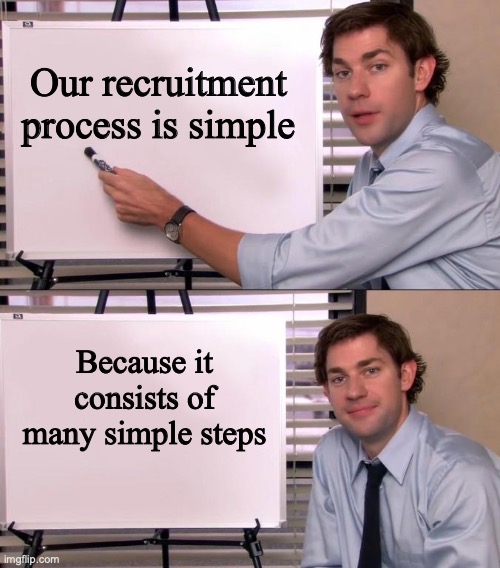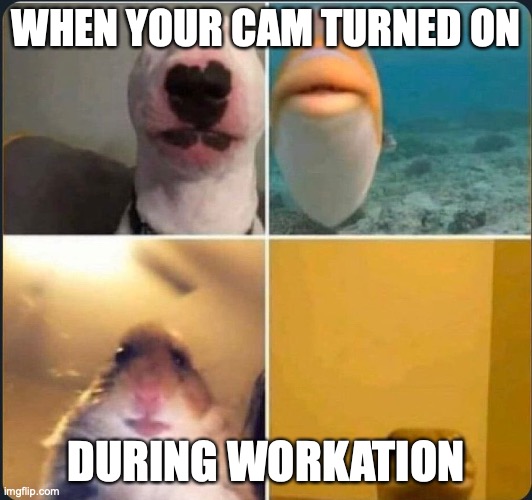This time I’ll talk about the importance of clear communication about the recruitment process, why algorithmic tasks aren’t the best idea to test the skills of candidates and people who have been hiding where they work for two years. Seriously, such people exist.
1. Netflix teaches transparency
A lot of myths have grown up around recruitment for big companies, and the processes they run are almost always associated with heroic struggles at every level – from screening to the final interview with the supervisor. It is well known that there is a grain of truth in every legend, but from a company perspective, it is worth ensuring that the legend does not become a tale of dragons and brave knights.
A perfect example of ‘demystifying’ the recruitment process for the role of Backend Engineer is a note that Netflix published on Medium. What can we find in it? First of all, a good portion of empathy for the candidates! The HR people have put themselves firmly in the role of the programmers and listed some poor recruitment experiences at the very beginning. Who among you hasn’t spent HOURS preparing for a technical interview that ended up with trivial problems for the employer?
Then Netflix very frankly, simply and transparently explains the different stages of their recruitment process. There are 6 parts to the process, but as many as 3 of them (in addition to the first ones) are screening interviews with a recruiter, a manager, and another engineer, the latter of which can also take the form of a first test. It all depends on the level of the position. The next 2 stages are rounds of on-site meetings (45 minutes each) and the final part is about what we like best – the final salary offer.

Netflix also boasts what it calls Centralized Hiring, which is the sharing of candidate information between different teams. This means that if you are temporarily not a good fit for a particular project, but someone else could make perfect use of your skills, you will not be refused, but offered a change of recruitment. What’s more, this can happen at any stage. Clever!
For more on how Netflix recruits, read the original post. Employers are also left with it as inspiration…
Source:
https://netflixtechblog.com/demystifying-interviewing-for-backend-engineers-netflix-aceb26a83495

2. Recruiting like a math competition
By writing about Netflix we have somewhat started the topic of technical verification when recruiting for a new project or company. Let’s go further with this.
Charles Féval has published a real manifesto on his blog that you can probably agree with. The point is that the algorithmic tasks (LeetCode-style) used in recruitment interviews are pointless if your job doesn’t involve solving algorithmic tasks.

His patience ran out when Charles was given these types of tasks on three of the four processes he was involved in. Meanwhile, in his opinion, 99% of IT jobs do not require competence in this area. Charles’ list of objections is quite long: the LeetCode tasks do not test practical skills, do not allow to assess the quality of the code written by the candidate, increase stress, are discriminatory and provide little objective results.
Alternatives? Of course there are. All you need to do is review a candidate’s GitHub account and ask them to evaluate specific code in a casual, peer-to-peer conversation.
I’m curious to know which you deal with more often: solving puzzles or developing conversations during recruitment, but the answers are probably my guess.
Source:
https://fev.al/posts/leet-code/

3. When will we see you in the office?
There are three terrible things in this world: tweaking someone’s code, spiders and the question in the title of this paragraph. Each of these is worth avoiding as much as possible, and if that is not possible, adopt a defensive posture and wait. Alternatively, pretend that you’d be most happy to come to the office to correct code and clean the spider webs off your desk.
I was recently captivated by a text published on Vice, which tells the story of Daniel – a guy who works for an English company living in Thailand and has been hiding this fact from his boss for two years. Just imagine balancing on the edge of time zones, setting a clean background during video conferences or keeping a neutral face when the boss complains about the cold weather and rain. I don’t think I could manage that. Another example is Matt, who swapped the US for Europe without telling his employer. He has even implemented a system that simulates his activity at the appropriate times, and a VPN is his best buddy.

Daniel and Matt’s story reads like a funny pastiche, but its message is much deeper. Our lives have changed a lot in recent years. We have discovered that we can work from anywhere or we have been forced to do so by the situation around us. Bringing everyone back to the office again is probably a mission impossible. A study of 1,500 people in the US found that up to 94% of them see no problem in working from anywhere in the world, as long as their tasks are done right. Employers don’t quite agree – working from outside their country can mean tax and social security hassles.
In the same research, only 46% of HR professionals said they know where individuals in the company work from. Tell them or not? That is the question!




